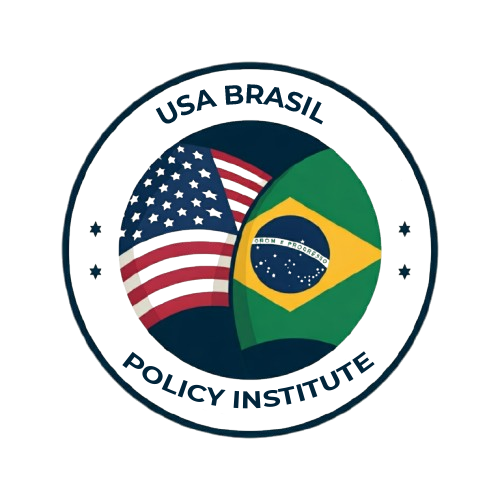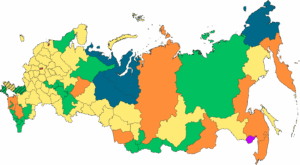WASHINGTON D.C. – A seemingly modest shipment of rare earth minerals from Pakistan to the United States on October 2nd has ignited a major geopolitical standoff, provoking a sharp escalation in the trade war with China and rattling global markets.
The consignment, totaling 2 tons and including 17 different rare earth minerals, marked the initial step in a massive $500 million agreement between US Strategic Mineral and the Pakistani military’s Frontier Works Organization (FWO). Experts suggest the deal, if fully realized, could be a critical component in undermining China’s near-monopoly on the rare earth supply chain—minerals essential for U.S. defense, high-tech manufacturing, drones, and missile production.
The timing of the shipment proved to be an immediate catalyst for Beijing. Just one week later, on October 9th, China’s Ministry of Commerce announced sweeping new export restrictions on rare earth minerals, related equipment, and processing technology, including foreign-made products utilizing Chinese rare earths or processing methods. This move was described by analysts as the most aggressive attempt yet to weaponize its rare earth dominance.
Trump’s Tariff Threat and Market Volatility
The day after China’s restrictions, President Donald Trump responded with a threat to impose a 100% tariff on all remaining Chinese goods, a move that sent immediate shockwaves through financial markets. The S&P 500 dropped 2.72% on October 10th. However, the President quickly retracted the threat, reportedly after advisors warned that the U.S. would need at least six more months to fully wean itself off its dependence on Chinese rare earth processing. The incident underscored the strategic vulnerability the rare earth supply chain presents to U.S. national security and economic stability.
Pakistan’s Strategic Pivot Undermines China
The rare earth deal is particularly stinging to Beijing because it involves Pakistan, a cornerstone of China’s Belt and Road Initiative (BRI). Pakistan is one of the largest recipients of BRI funding, with over $25 billion in completed projects and an estimated $62 billion planned, making China its largest creditor with over $30 billion in loans.
The new U.S.-Pakistan minerals collaboration follows a period of severely strained relations between Washington and Islamabad, dating back to the Afghanistan war. According to sources, the U.S. “cold shoulder” treatment following the war’s conclusion ironically left Pakistan more receptive to a diplomatic outreach from the Trump administration. This newfound warmth was cemented after President Trump reportedly intervened to defuse a brief but intense skirmish between India and Pakistan in May 2025, paving the way for the critical minerals deal. This strategic pivot by Pakistan is viewed as a significant blow to China’s efforts to cultivate a fully controlled strategic ally.
China’s Economic Boycott and Sectoral Tariff Debate
Beyond the rare earth market, the current trade tension is also marked by China’s continuing “silent boycott” of U.S. goods since April 2025. This coordinated effort focuses on agricultural products, where substitutes are readily available from nations, most notably Brazil. The soybean market has been a key target, with Chinese state-owned and state-financed companies virtually ceasing purchases, resulting in an estimated $12.2 billion annual loss for U.S. farmers.
The dual pressure—rare earth supply constriction and an agricultural boycott—has led to a fierce debate in Washington over an appropriate counter-strategy. While President Trump’s immediate reaction was to threaten broad tariffs, a new approach is being discussed: a sectoral tariff specifically targeting Chinese farm-origin products. Proponents argue this move would be a direct counter to China’s agricultural boycott, potentially strengthening U.S. geopolitical leverage in its partner countries, and might even be received positively by markets as a more targeted response.
In the meantime, the U.S. defense and technology sectors are in a “war-time rush” to accelerate domestic rare earth development, including missile and drone production, while seeking to approve new mines and build out refining capacity—a direct response to the vulnerability exposed by China’s economic warfare.
As long as the U.S. lacks domestic or allied rare earth production capacity, President Trump cannot unilaterally implement a 100% tariff on China without significantly threatening the overall domestic economy and the stock market. However, there is a strategic pathway to achieve trade balance goals quietly, minimizing immediate market volatility.
Phase 1: Achieving Reciprocity in Food and Agriculture Trade
The initial step involves not announcing a focus on balancing the food and agriculture trade. This means the U.S. will impose import restrictions on Chinese goods equivalent in value to the agricultural products China purchases from the U.S.
Context: In 2020, China imported $27.2 billion in U.S. agricultural products. By 2025, Chinese soybean purchases alone have dropped drastically, falling from previous years’ levels of approximately $12 billion to only about $2.1 billion.
Action: Since a sweeping 100% tariff is unfeasible, the U.S. should immediately impose a 9% tariff specifically on Chinese food and agriculture-connected exports to the U.S. This tariff should be incrementally increased each month until the trade volume for these specific goods effectively mirrors a boycott, similar to China’s current actions. Some products may only require a 9% increase to achieve the desired impact. The tariff should not be announced. (Initial List of Chinese products – $28.8 Billion in 2024 Imports lists below):
Phase 2: Targeted Tariffs on Farm-Sourced Materials and Preferential Treatment for Allies
If China doesn’t pick up sales after a few months, an additional targeted tariff of 4% to 9% should be placed on specific Chinese imports derived from farm-based or natural materials.
Targeted Chinese Imports: This list includes products such as cotton, leather, wool, hemp, bamboo, and wood or other farm-sourced materials and their manufactured products.
Market Stabilization Clause: To prevent stock market shock from minor tariff raises, this tariff should only apply to the portion of goods still being imported into the U.S. to make it as small as possible., accounting for the fact that existing 55% tariffs have already reduced imports of many Chinese goods.
Incentivizing partners and allies: Concurrently, the U.S. should immediately reduce tariffs on the same list of products coming from ten targeted countries—Argentina, Chile, Paraguay, Egypt, Kenya, Ethiopia, Nigeria, Peru, Pakistan, and Tanzania—from a previous rate (e.g., 10%) down to 5%.
Rationale for Country Selection: These nations are currently major targets for China’s BRI and relationship-building efforts and strategic partnership efforts. The goal is to strengthen U.S. relationships with these countries, particularly the high-population African nations (Egypt, Ethiopia, Nigeria), fostering economic growth that will eventually lead them to require more complex American food imports. The US strategic goal should be to see Egypt and Ethiopia being two countries that develop quickly and have a large complex diet, so that they buy US agriculture.
Subsequent Phased Escalation
The following steps involve repeating the process every two to three months, contingent on China’s response regarding soybean and general agricultural and US imports. If China continues to decouple and seek alternatives then the USA should full decouple as well. I believe China has a limited amount of import firepower and they prefer just not to waste that money on helping the USA in anyway. President Trump needs to recognize that.
Step 2: If China does not increase agricultural purchases, a 4% to 9% tariff is added to any remaining goods from the initial list that are still being imported from China. Simultaneously, the tariffs on the ten allied countries for those same goods are reduced from 5% down to 0%.
Step 3: If, after another two to three months, China continues to use rare earths as leverage, the tariff on imported goods from the initial list should be raised to 4% to 9% (if not already there). Tariffs on the ten target countries for any remaining items on that list would then be reduced to 0%.
Step 4: Full Decoupling Goal: This procedure should be repeated every few months until the U.S. imports zero labor-intensive products from China, specifically targeting textiles, garments, apparel, and food products. This phased approach aims to systematically reduce the nearly $28 billion in annual imports from China in these sectors to zero over time without an immediate, single market-shocking action.
- Ambergris, castoreum, glands for pharmacy $5,470
- Animal (not fish) guts, bladders, stomachs and parts $229,130
- Animal fat, oil and fraction not specified elsewhere and not chemically modified $20,500
- Animal or vegetable fats and oils, hydrogenated, not further prepared $31,120,000
- Animal or vegetable fats, oils, fractions, chemically modified, inedible $1,200,000,000
- Animal products not specified elsewhere, dead animals, inedible $105,990,000
- Apples, pears and quinces, fresh $21,060,000
- Apricots, cherries, peaches, plums and sloes, fresh $50,141,111
- Article of Yarn, Strip or the Like of Artificial Textile Materials, Rope $84,980,000
- Articles of Apparel and Clothing Accessories, of Leather, Composition Leather $170,260,000
- Articles of Apparel and Clothing Accessories, of Vulcanized Rubber $586,480,000
- Articles of Gut, of Goldbeater’s Skin, of Bladders or of Tendons $3,740
- Articles of Stationery, Notebooks, Folders, Albums, of Paper, Paperboard $286,990,000
- Babies’ garments and accessories, Knitted or Crocheted $394,660,000
- Bananas and plantains, fresh or dried $1,777,777
- Barley $47,666
- Bird skins and other feathered parts and down $79,166,000
- Bobbins, spools, cops and similar of paper and paperboard $974,430
- Bones and horn cores, unworked, powder and waste $137,996
- Bran, Sharps, Other Residues (Derived from the Working of Cereals) $394,560
- Bread, Other Bakers’ Wares, Communion Wafers, Empty Cachets, Rice Paper $100,530,000
- Buckwheat, millet and canary seed, cereals not specified elsewhere $1,280,000
- Builders’ joinery and carpentry of Wood $210,540,000
- Bulbs, tubers, chicory plants and roots not specified elsewhere $54,500
- Cabbages, cauliflower, kale, fresh or chilled $1,919,999
- Cane or Beet Sugar, Chemically Pure Sucrose (In Solid Form) $2,690,000
- Carbon Paper, Self-copy Paper, Other Copying or Transfer Papers $2,160,000
- Carbon Paper, Self-copy Paper, Other Copying or Transfer Papers $789,130
- Carrots, turnips and other edible roots, frozen or chilled $133,300
- Cartons, Boxes, Cases, Other Packing Containers, of Paper, Paperboard $814,060,000
- Casks, Barrels, Vats, Tubs, Other Coopers’ Products of Wood, $538,690
- Cereal straw and husks, unprepared; whether or not chopped, ground, pressed or in the form of pellets $8,060
- Cigarette Paper $4,220,000
- Cigars, Cheroots, Cigarillos and Cigarettes of Tobacco or Substitutes $11,870,000
- Cinnamon and cinnamon-tree flowers $1,030,000
- Citrus fruit, fresh or dried $4,730,000
- Cloves (whole fruit, cloves and stems) $370,535
- Coated Paper and Paperboard $41,630,000
- Coconut, palm kernel or babassu oil, not chemically modified $547,760
- Coconuts, brazil nuts and cashew nuts, fresh or dry $18,520
- Coffee, coffee husks, substitutes with coffee $22,474,444
- Composite Paper and Paperboard (In Rolls or Sheets) $299,936
- Compounded Rubber, Unvulcanized $4,600,000
- Conveyor or Transmission Belts or Belting, of Vulcanized Rubber $117,380,000
- Coral, shell of molluscs unworked powder/waste $1,530,000
- Corn (maize) $137,400
- Cotton sewing thread, retail packed or not $614,970
- Cotton Waste (Including Yarn Waste and Garnetted Stock) $7,856,000
- Cotton Yarn (Cotton Content 85%) $651,140,000
- Cotton Yarn (Cotton Content Less than 85%) $94,160,000
- Cotton yarn (not sewing thread) retail packed $5,020,000
- Cotton, carded or combed $36,920
- Cotton, not carded or combed $105,590
- Crustaceans $157,036,000
- Crustaceans, live, fresh , and cooked $14,100,000
- Cucumbers and gherkins, fresh or chilled $4,300
- Cut flowers and buds for bouquets, prepared $4,330,000
- Dates, figs, pineapples, avocados, fresh or dried $4,450,000
- Degras, Residues Resulting from Treatment of Fatty Substances or Waxes $14,680
- Densified wood blocks/plates/strips/profile shapes $673,440
- Envelopes, Letter Cards, Plain Postcards, Boxes, Pouches of Paper, Paperboard $30,730,000
- Extracts and Juices of Meat, Fish Crustaceans, Molluscs, Other Aquatic Invertebrates $845,610
- Extracts, Essences, Concentrates of Coffee, Tea, Mate, Roasted Chicory $58,950,000
- Footwear with Uppwers of Textile Materials $2,920,000,000
- Fats and oils, their fractions, fish and marine mammal $1,130,000
- Felt, whether or not impregnated, coated, covered or laminated $17,280,000
- Fiberboard of wood or other ligneous materials $138,860,000
- File fabrics, knitted or crocheted $68,770,000
- Filter Blocks, Slabs and Plates of Paper Pulp $755,700
- Fish fillets and other fish meat, fresh, chilled or frozen $1,010,000,000
- Fish, dried, salted, smoked, edible fish meal $51,360,000
- Fish, fresh or chilled (no fillets or other meat) $1,700,000
- Fish, frozen (no fish fillets or other fish meat) $166,210,000
- Fish, live $599,920
- Fixed vegetable fats and oils not specified elsewhere, not chemically modified $28,710,000
- Flaxseed (linseed), whether or not broken $254,890
- Flour and meal of oil seed and olea fruit (no mustard) $521,270
- Flours, Meals, Pellets of Meat, Fish, Aquatic Invertebrates, Greaves $7,250
- Foliage, grasses for bouquets, prepared $16,100,000
- Food preparations not specified elsewhere $574,830,000
- Fruit and nuts (raw or cooked by steam), frozen $4,290,000
- Fruit and nuts temporarily preserved, not edible $617,810
- Fruit dried not specified elsewhere, mixtures of nuts or dried fruit $34,030,000
- Fruit not specified elsewhere, fresh $3,820,000
- Fuel Wood, Wood in Chips or Particles, Sawdust, Wood Waste and Scrap $1,210,000
- Garments, Knitted or Crocheted $72,600,000
- Gimped Yarn, Chenille Yarn, Loop Wale-yarn $49,820,000
- Ginger, saffron, tumeric, thyme, bay leaves $71,940,000
- Gloves, Mittens and Mitts, Knitted or Crocheted $638,740,000
- Glycerol (glycerine), glycerol waters and lyes $214,920
- Grain sorghum $27,940
- Grapes, fresh or dried $227,490
- Hard rubber in all forms: articles of hard rubber $3,580,000
- Hogs’ hair, badger hair, waste hair $1,590,000
- Hoopwood, Split Poles, Piles, Pickets, Stakes of Wood, Wooden Stick, Chipwood $436,070
- Hop cones, fresh or dried, lupulin $122,900
- Human hair, unworked and waste of human hair $30,530
- Hygienic or Pharmaceutical Articles of Vulcanized Rubber $6,660,000
- Ice Cream, Other Edible Ice $2,410,000
- Industrial Monocarboxylic Fatty Acids and Fatty Alcohol $8,310,000
- Inner Tubes of Rubber $22,220,000
- Ivory, tortoise-shell, whalebone and whalebone hair, horns, antlers, hooves, nails, claws, beaks unworked $4,020
- Knotted Netting; Made up Fishing Nets of Textile Materials $14,000,000
- Labels of paper or paperboard, printed or not $70,450,000
- Lac, natural gums, resins, gum-resins and balsams $5,546,000
- Leguminous vegetables, shelled or not, frozen or chilled $138,020
- Lettuce and chicory, fresh or chilled $20,720
- Live molluscs and aquatic invertebrates not specified elsewhere $83,320,000
- Live plants not specified elsewhere, cuttings, mushroom spawn $79,070,000
- Locust beans, seaweeds and other algae, sugar beet, sugar cane, whether or not ground; fruit stones, kernels and other vegetable products $106,390,000
- Malt Extract; Food Preparations of Flour, Meal, Starch, Milk, Cream $41,910,000
- Manioc, Jerusalem artichokes, sweet potatoes and similar roots and tubers $48,620,000
- Margarine, edible mixtures or preparations of animal or vegetable fats and oils $725,700
- Mate $29,190
- Men’s or Boys’ Overcoats, Carcoats, Knitted or Crocheted $150,550,000
- Men’s or boys’ shirts, Knitted or Crocheted $159,990,000
- Men’s or Boys’ Suits, Jackets, Blazers, Trousers, Knitted or Crocheted $253,770,000
- Men’s or boys’ underpants, pijamas, Knitted or Crocheted $458,096,000
- Metallized Yarn, Being Textile Yarn, Covered With Metal $1,300,000
- Natural Rubber, Balata, Gutta-percha, Guayule, Chicle, Similar Natural Gums $446,620
- New Pneumatic Tyres of Rubber $856,010,000
- Newsprint, in Rolls or Sheets $16,850,000
- Nonwovens, whether or not impregnated, coated, covered or laminated $395,440,000
- Nutmeg, mace and cardamoms $399,100
- Nuts not specified elsewhere, fresh or dried $50,110,000
- Oats $13,040
- Oil seeds and oleaginous fruits not specified elsewhere, whether or not broken $17,070,000
- Oil-cake, Solid Residues Resulting from Extraction of Ground-nut Oil $121,840,000
- Oil-cake, Solid Residues Resulting from Extraction of Soya-bean Oil $4,430
- Olive oil and its fractions, not chemically modified $29,480
- Olive-residue oil and blends not chemically modified $86,400
- Onions, shallots, garlic, leeks, frozen or chilled $141,320,000
- Other Articles of Leather or of Composition Leather $18,840,000
- Other Articles of Vulcanized Rubber $799,280,000
- Other Articles of Wood $670,340,000
- Other Forms and Articles of Unvulcanized Rubber $3,210,000
- Other Garments, Knitted or Crocheted $597,210,000
- Other Knitted or Crocheted Fabrics $1,740,000
- Other Made up Clothing Accessories, Knitted or Crocheted $201,320,000
- Other Manufactured Tobacco, Homogenised Tobacco, Tobacco Extract, Essence $2,320,000
- Other Oil-cake and Solid Residues $1,200,000
- Other Paper, Paperboard, Cellulose Wadding, Other Articles $865,670,000
- Other Sugars, Sugar Syrups, Artificial Honey, Caramel $61,280,000
- Other Uncoated Paper and Paperboard (In Rolls or Sheets) $3,770,000
- Packing Case, Box, Crates, Similar Packings, of Wood; Load Board of Wood $9,110,000
- Palm oil and its fractions, not chemically modified $45,600
- Paper and Paperboard, Corrugated, Creped, Crinkled, Embossed, Perforated $2,630,000
- Paper, Paperboard, Cellulose Wadding, Webs of Cellulose Fibres (Coated, Printed) $107,010,000
- Paper, uncoat, for writing, rolls, handmade paper $4,420,000
- Particle Board and Similar Board of Wood or Other Ligneous Materials $8,920,000
- Pasta (Spaghetti, Macaroni, Noodle, Lasagna), Couscous $124,350,000
- Peanut oil and its fractions, not chemically modified $998,610
- Peanuts (ground-nuts), raw $794,860
- Peel, citrus or melon, fresh, frozen, dried, provisionally preserved $399,940
- Pepper, genus piper, genus capsicum or pimenta $112,240,000
- Plants for pharmacy, perfume, insecticides $30,920,000
- Plates, Sheets, Strip, Rods and Profile Shapes, of Vulcanized Rubber $46,400,000
- Plywood, Veneered Panels and Similar Laminated Wood $159,560,000
- Potatoes (except sweet potatoes), fresh or chilled $77,980
- Preparations of a Kind Used in Animal Feeding $269,600,000
- Prepared Food Obtained By the Swelling or Roasting of Cereals $8,230,000
- Prepared or Preserved Fish, Caviar, Caviar Substitutes $123,460,000
- Prepared or preserved meat, meat offal and blood not specified elsewhere $1,820,000
- Railway or tramway sleepers (cross-ties) of wood $24,400
- Rape or colza seeds, whether or not broken $830,020
- Rapeseed, colza or mustard oil, not chemically modified $596,860
- Reclaimed Rubber (In Primary Forms or in Plates, Sheets, or Strip) $5,300,000
- Residues of Starch Manufacture, Beet-pulp, Brewing or Distilling Waste $71,180
- Retreaded, Used Pneumatic Tyres, Solid, Cushion Tyres, Tyre Flaps $33,540,000
- Rice $56,870,000
- Rubber Thread and Cord, Textile Yarn $7,680,000
- Rutabagas, hay, clover and other forage products $1,350,000
- Saddlery and Harness for Any Animal (Traces, Leads, Knee Pads, Muzzles) $210,350,000
- Sauces and Preparations Therefor, Mixed Condiments, Mustard Flour Meal $179,800,000
- Sausages and Similar Products Food Preparations $4,530
- Seeds, anise, badian, fennel, coriander, cumin $2,370,000
- Seeds, fruit and spores, for sowing $35,870,000
- Soups, Broths, Preparations Therefor, Homogenised Composite Food $54,190,000
- Soybean oil and its fractions, not chemically modified $72,610
- Soybeans, whether or not broken $2,500,000
- Sugar Confectionery (Including White Chocolate), Not Containing Cocoa $165,880,000
- Sunflower seeds, whether or not broken $2,530,000
- Sunflower-seed, safflower or cotton-seed oil, not chemically modified $551,980
- Synthetic Rubber, Factice Derived from Oils, Mixtures of Rubbers $27,510,000
- Tableware and Kitchenware, of Wood $290,380,000
- Tapioca, Substitutes Therefor Prepared from Starch $2,460,000
- Tea $59,580,000
- Toilet or Facial Tissue Stock, Napkin Stock, Cellulose Wadding $5,100,000
- Toilet Paper, Towels, Similar Household, Sanitary Articles, of Paper $787,260,000
- Tomatoes, fresh or chilled $3,700
- Tools, Tool Bodies, Tool Handles, of Wood; Shoe Lasts and Trees of Wood $9,860,000
- Track suits, ski-suits & swimwear, Knitted or Crocheted $236,270,000
- Travel Goods, Handbags, Brief-cases, Spectacle Cases, Similar Containers $2,840,000,000
- T-shirts, singlets, tank tops, Knitted or Crocheted $618,270,000
- Tubes, Pipes, Hoses of Vulcanized Rubber $269,080,000
- Twine, Cordage, Rope and Cables $70,570,000
- Uncoated Kraft Paper and Paperboard (In Rolls or Sheets) $8,040,000
- Unmanufactured Tobacco, Tobacco Refuse $2,640
- Vanilla beans $63,470
- Vegetable Materials, Waste, Residues of a Kind Used in Animal Feeding $51,650
- Vegetable Parchment, Tracing Papers, Other Glazed Transparent Paper $8,770,000
- Vegetable plaiting materials (bamboos, reeds) $10,720,000
- Vegetable products not specified elsewhere $11,590,000
- Vegetable saps and extracts: pectinates and pectates $359,860,000
- Vegetable Waxes, Bees Wax, Other Insect Waxes and Spermaceti $10,050,000
- Vegetables (raw or cooked by steam), frozen $98,080,000
- Vegetables not specified elsewhere, fresh or chilled $14,740,000
- Vegetables, dried, whole, cut, but not further prepared $109,760,000
- Vegetables, leguminous, shelled, whether or not skinned or split, dried $24,130,000
- Vegetables, temporarily preserved, not edible $537,370
- Veneer Sheets, Sheets for Plywood, Other Wood $3,200,000
- Vulcanized rubber thread and cord $1,380,000
- Wadding and Articles of Wadding; Textile Flock, Dust, and Mill Neps $49,780,000
- Wallpaper and Similar Wall Coverings, Window Transparencies of Paper $29,680,000
- Waste, Parings and Scrap of Rubber, Powders, Granules Obtained Therefrom $6,430
- Wheat and meslin $4,680
- Women’s or girls’ blouses & shirts, Knitted or Crocheted $178,580,000
- Women’s or Girls’ Overcoats, Carcoats, Knitted or Crocheted $211,176,000
- Women’s or girls’ slips, pijamas, Knitted or Crocheted $1,170,000,000
- Women’s or Girls’ Suits, Jackets, Blazers, Dresses, Knitted or Crocheted $1,190,000,000
- Wood charcoal, whether or not agglomerated $1,240,000
- Wood in the Rough $1,150,000
- Wood Marquetry and Inlaid Wood, Caskets and Cases of Wood, Statuettes of Wood $435,200,000
- Wood Sawn or Chipped Lengthwise, Sliced or Peeled $44,230,000
- Wood wool (excelsior), wood flour $63,750
- Wood, Continuously Shaped Along Any of Its Edges or Faces $21,860,000
- Wooden Frames for Paintings, Photographs, Mirrors, Similar Objects $166,000,000
- Wool grease and fatty substances derived therefrom $6,080,000
- Woven cotton fabrics not specified elsewhere $1,150,000
- Woven cotton fabrics, not under 85% content, weight not over 200 g/m2 $34,300,000
- Woven cotton fabrics, not under 85% content, weight over 200 g/m2 $8,640,000
- Woven cotton fabrics, under 85% content, not over 200g/m2 $4,560,000
- Woven cotton fabrics, under 85% content, over 200g/m2 $2,100,000
- Yeasts, Other Single-cell Micro-organisms, Prepared Baking Powders $32,940,000



